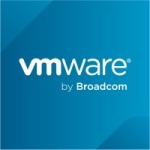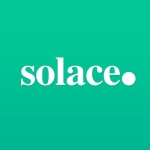What is our primary use case?
We collect data from AWS IoT Core and then capture the stream in Amazon Kinesis. The data is then stored in S3 and shifted to Snowflake for analysis.
What is most valuable?
What I like about Amazon Kinesis is that it's very effective for small businesses. It's a well-managed solution with excellent reporting. Amazon Kinesis is also easy to use, and even a novice developer can work with it, versus Apache Kafka, which requires expertise.
What needs improvement?
My company found some Amazon Kinesis discrepancies, so it's looking forward to a more modernized solution from Apache Kafka.
One area for improvement in the solution is the file size limitation of 10 Mb. My company works with files with a larger file size.
The batch size and throughput also need improvement in Amazon Kinesis. The solution needs to be more open regarding the type of files for streaming and the streaming size. Amazon should not limit those aspects. It should be unlimited. If a company is ready to pay, why not make it unlimited?
What I want to add to Amazon Kinesis is modernization based on the container environment, where I can add containers and more workers. I also expect some human resources to be added and an SLA agreement with Amazon, if possible.
For how long have I used the solution?
I've been using Amazon Kinesis for about one year, and I'm still using it.
What do I think about the stability of the solution?
Amazon Kinesis could be more stable. One of my clients rejected it, while some clients find it okay, stability-wise. I'd rate Amazon Kinesis stability as five out of ten.
What do I think about the scalability of the solution?
I can rate Amazon Kinesis scalability according to the organization size and data load. For a small organization using the solution and Lambda with some transformation through AWS Glue, Amazon Kinesis is the best, scalability-wise. However, if you're dealing with a billion tuples, for example, the solution isn't as scalable, so I would go for Apache Spark or Apache Kafka to handle the load.
When I see that the processing takes longer than fifteen minutes with Lambda and the tenants fail, I use Apache Spark for processing, but that could take up to three or four days to be comparable to big data technologies.
I'd rate the scalability of Amazon Kinesis as four out of ten.
How are customer service and support?
My company contacted some premium partners and technicians of Amazon Kinesis and found the technical support good, but with some limitations. I'd rate support a seven out of ten. Though it had limitations, the interaction with support was pleasant.
How would you rate customer service and support?
Which solution did I use previously and why did I switch?
In the future, my company plans to switch to Apache Kafka because it's very flexible and easier to manage. It's also easier to control and manage limits about topics. On the other hand, Amazon Kinesis has some limitations to its charts. It also has a 10 Mb limit to its file size, so if you have a 20 Mb file, you have to make it 10 Mb.
How was the initial setup?
Amazon Kinesis is easy to set up, and it's a ten out of ten for me. Setting it up is a straightforward process.
What about the implementation team?
My company set up Amazon Kinesis for the client.
What's my experience with pricing, setup cost, and licensing?
If you ask a client about Amazon Kinesis pricing, the client usually says it's high. If you ask a business owner, the business owner would tell you that pricing for Amazon Kinesis is a little bit high. For each region, it's a little bit high.
There is a particular concern regarding Amazon Kinesis here in Pakistan because there's no zone in Pakistan. Amazon needs to develop zones here because Pakistan is the biggest country in the region after India. Amazon is losing a lot of business in Pakistan because there's no AWS zone here.
AWS also didn't accept my Pakistan credit card when I was trying to register with AWS. AWS should develop trust here in Pakistan and excellent AWS zones, so Pakistan businesses that want to purchase Amazon Kinesis won't need to depend on Singapore or India.
When I'm closing a deal with a new client, the client would ask, "Why do you need to sign up with a zone in India or Singapore to save data?" I don't have an answer to that question, so a workaround would be to develop on-premise environments for clients to save data.
Amazon Kinesis pricing is sometimes reasonable and sometimes could be better, depending on the planning, so it's a five out of ten for me.
What other advice do I have?
Nowadays, my company works with AWS, Snowflake, Redshift, Amazon Kinesis, Firehose, Aurora, and Athena. In the future, my company plans to work with SAP HANA.
My rating for Amazon Kinesis is six out of ten.
My company is a user of Amazon Kinesis.
Disclosure: My company does not have a business relationship with this vendor other than being a customer.

















